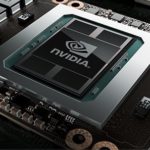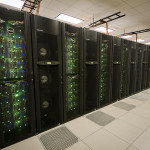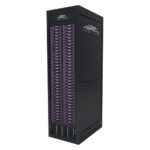“For those that develop HPC applications, there are usually two main areas that must be considered. The first is the translation of the algorithm, whether simulation based, physics based or pure research into the code that a modern computer system can run. A second challenge is how to move from the implementation of an algorithm to the performance that takes advantage of modern CPUs and accelerators.”
Fayetteville State University Leverages Bright Cluster Manager for AI Research
Fayetteville State University is using Bright Cluster Manager for ground-breaking Artificial Intelligence research. Bright Cluster Manager enables the University to deploy complete clusters over bare metal and manage them effectively. Managing the hardware, operating system, HPC software, and its users is done with an elegant easy-to-use graphical user interface. With Bright Cluster Manager, IT/system administrators can quickly get clusters up and running and keep them running reliably throughout their lifecycle.
Purdue Adds New Resource for GPU-accelerated Research Computing
A new computing resource is available for Purdue researchers running applications that can take advantage of GPU accelerators. The system, known as Halstead-GPU, is a newly GPU-equipped portion of Halstead, Purdue’s newest community cluster research supercomputer. Halstead-GPU nodes consist of two 10-core Intel Xeon E5 CPUs per node, 256 GB of RAM, EDR Infiniband interconnects and two NVIDIA Tesla P100 GPUs. The GPU nodes have the same high-speed scratch storage as the main Halstead cluster.
Podcast: 18 Petaflop Stampede 2 Supercomputer Powers Research at TACC
In this Texas Standard podcast, Dan Stanzione from TACC describes Stampede2, the most powerful university supercomputer in the United States. “Phase 1 of the Stampede2 rollout, now complete, features 4,200 Knights Landing (KNL) nodes, the second generation of processors based on Intel’s Many Integrated Core (MIC) architecture. Later this summer Phase 2 will add 1,736 Intel Xeon Skylake nodes.”
Speeding Up Big Data Analysis With Intel MKL and Intel DAAL
“New algorithms that can query massive amounts of data an draw conclusions have been developed, but these algorithms need to be optimized on the underlying hardware. This is where the expertise of vendors who develop the hardware can add tremendous value. Optimizing the underlying libraries that can execute with a high degree of parallelism will definitely lead to improved performance for the software and productivity gains for the organization.”
Podcast: A Retrospective on Great Science and the Stampede Supercomputer
TACC will soon deploy Phase 2 of the Stampede II supercomputer. In this podcast, they celebrate by looking back on some of the great science computed on the original Stampede machine. “In 2017, the Stampede supercomputer, funded by the NSF, completed its five-year mission to provide world-class computational resources and support staff to more than 11,000 U.S. users on over 3,000 projects in the open science community. But what made it special? Stampede was like a bridge that moved thousands of researchers off of soon-to-be decommissioned supercomputers, while at the same time building a framework that anticipated the eminent trends that came to dominate advanced computing.”
Dell Builds Bracewell Supercomputer for Bionic Vision Research at CSIRO in Australia
Today CSIRO, Australia’s top science agency, announced deployment of a new Dell EMC supercomputer, kicking off a new generation of research in artificial intelligence. “This new system will provide greater scale and processing power we need to build our computer vision systems by optimization of processing over broader scenarios, represented by much larger sets of images, to help train the software to understand and represent the world. We’ll be able to take our computer vision research to the next level, solving problems through leveraging large scale image data that most labs around the world aren’t able to.” Assoc. Professor Barnes said.
PSSC Labs Powers University of Dayton Atmospheric Optics Research
PSSC Labs recently announced the deployment of a powerful, turn-key HPC Cluster for the University of Dayton’s Intelligent Optics Laboratory. “It was important for us to select a vendor familiar with the systems requirements of this type of advanced research, that can simultaneously offer the processing power we need while staying within the budget permitted by our research grants,” said Morris Maynard, Sr. Software Engineer at UD. “PSSC offered the best combination of price, software and support available to help advance our research goals.”
Intel’s Raj Hazra on how new technologies are Clouding our Future
In this video from ISC 2017, Raj Hazra, Corporate Vice President and General Manager of the Enterprise and Government Group at Intel, discusses key trends impacting the future growth of High Performance Computing. He focuses on the opportunities of enabling HPC in the cloud, and how this drives the need for a consistent platform that bridges the worlds of dedicated supercomputers and hyperscale cloud service providers.












